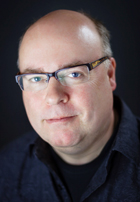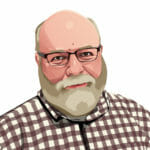
Over in South Korea, precocious robots have been sniffing the air at a few nursing home test sites and neutralizing unwelcome odors. Or at least they were, but now have probably been reassigned to nose around for radioactive effluvium from a nuclear test by a despotic neighbor. Talk about your ultimate call-in. Looks like human caregivers are going to have to pick up the olfactory slack in East Asia today.
The South Korean model, called the KIRO-5, is three feet tall and weighs more than 175 pounds. According to my calculations, that gives the robot a body-mass index of at least 94.9. As New Jersey governor Chris Christie might say, this is basically the healthiest fat robot we’ve ever seen. I hope those nursing home mucky-mucks did a thorough cost/benefit analysis before hiring, because KIRO-5 could be a major health risk going forward.
Interest in bringing this hyperosmiatic* creation to the United States has been widespread. When the Centers for Medicare & Medicaid Services people heard about it, they asked if KIRO-5 could be adjusted to sniff out fraud and abuse. The American Health Care Association hopes it can learn to smell a litigious family member before the end of a facility tour. And the Service Employees International Union wonders politely if the robot could please inhale a list of caregiver email addresses and cell phone numbers, then sneeze them onto a thumb drive and eject it next to the shrub by the front door.
But as with any new technology, I have serious concerns. What if KIRO-5 and RUGs-IV get into a fight in the break room? Or worse, what if its sensors become overloaded by a whiff of hypocrisy and the robot self-destructs while participating in a Capitol Hill lobbying visit? That would be the true smell test.
*May not be an actual word, but it smells like one to me.
Things I Think is written by Gary Tetz, who cobbles these pieces together from his secret lair somewhere near the scenic, wine-soaked hamlet of Walla Walla, WA. Since his debut with SNALF.com at the end of a previous century, he has continued to amuse, inform and sometimes befuddle long-term care readers worldwide.




